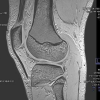A computerized tomography (CT) coronary angiogram is an imaging test that looks at the arteries that supply your heart with blood. Unlike traditional coronary angiograms, CT angiograms don't use a catheter threaded through your blood vessels to your heart.
The CT coronary angiogram procedure uses a powerful X-ray machine that produce images of your heart and its blood vessels. The procedure is minimally invasive with the need for an injection only so you do not need to stay in hospital after it has been done.
Both CT and traditional coronary angiograms expose you to radiation. If you have known coronary artery disease, a traditional coronary angiogram may be a better option for you, since you can also receive specialised treatment for your coronary artery disease during that procedure.
Canopy Imaging has a modern 128 slice state-of-the-art Siemens CT scanner which has a radiation reduction software package to enable rapid scanning and low radiation dose.
Why do I need this procedure?
A coronary CT angiogram (CTCA) is primarily used at Canopy Imaging to check for narrowed arteries in your heart (coronary artery disease) that could put you at risk of a heart attack or explain chest pain. The procedure may be better than a traditional angiogram for people who have only a moderate risk of coronary artery disease.
With a traditional coronary angiogram, a catheter is inserted in an artery in your groin and threaded through your blood vessels to your heart. A dye that is visible on X-rays is then injected through the catheter, and X-ray images of your heart are taken. During this procedure areas of narrowing and blocked arteries can be identified on the images. If significant narrowing is found a procedure called angioplasty can be performed to open the arteries. However, many people who have coronary angiograms don't have any blockages.
More about CT Coronary Angiography
With a CT angiogram procedure, no invasive catheter is placed in your groin. Instead, the dye visible on the CT scan is injected through an intravenous (IV) line that is placed in your arm. X-ray images are taken of your heart. However, because no catheter is used, if you need treatment to improve blood flow to the heart, you may still need a separate procedure (a traditional coronary angiogram and angioplasty) to treat your condition.
Another heart test that also uses a CT scanner is a CT Calcium Score Test. This test checks for calcium in the coronary arteries which can be a risk factor for coronary artery disease. No dye is injected during a coronary calcium scan.
Where can I get a CT scan done?
We have multiple locations available for CT scans throughout New Zealand;
Please select your location belowon the right to contact us
















